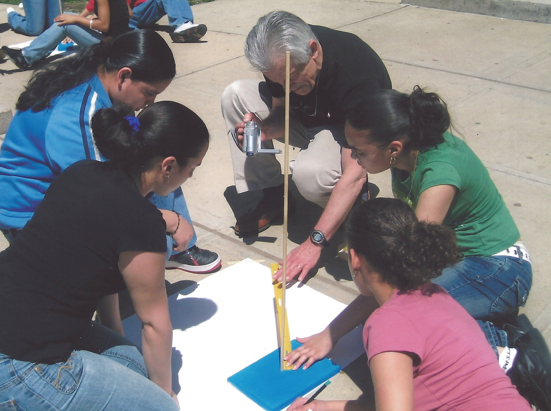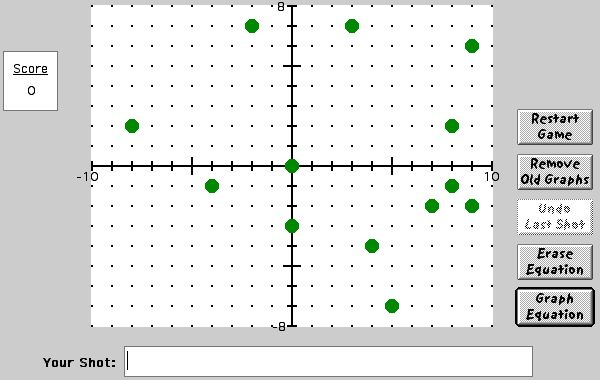Ihor Charischak
ihor@clime.org
CLIME Connections
CLIME Blog
|
Come and see
examples of how Web 2.0 and dynamic software
can transform math learning and teaching.
Participants will experience a series of
unique and compelling collaborative
activities that incorporate significant
software environments (spreadsheets,
Sketchpad and Web applets) that will help a
teacher to engage students in gaining a
deeper understanding of powerful
mathematical ideas.
|
updated: 7/27/16
Resources
Video of Keynote Talk
Current list
DMC Blog
Road Sign Problem
Buffon Needle
Motion Math
Jiji Math
Wuzzit Trouble
Number Bonds
Desmos
Desmos - Butterfly
Dan Meyer - 3 Acts
Explorelearning.com
Robertkaplinsky.com
Mathalicious.com
When Desmos Fails
What is Algebra? - Keith Devlin
The Wannado (Math) Curriculum - A Math Teacher's Journey to the Math 2.0 Classroom
 Measuring the Earth
Project
|
When will Technology’s Promise be realized in Math Education? Research & Innovation in Teaching Math with Technology Tuesday, 7/12/2016 11:00am–12:00pm |
|
|
0
|
Set the Stage:
Overview Math 2.0 Warm-up video: Hans Rosling's dynamic video (4min) Gapminder Tools *Don't Panic - the facts about population |
 |
| 1 | Jinx
Puzzle Pick a number, Add 11, multiply by 6, subtract 3, divide by 3, Add 5, Divide by 2, and subtract the original number. Surprise - you have been jinxed. For spreadsheet entries click here. Blog entry - link Jinx puzzle lesson - link Jinx calculator - link Proof - marbles & bags - link |
|
| 2 | Fermat's
Last Theorem Debunked? In an episode of the Simpsons, Homer appears to write a valid solution to debunk Fermat's Last Theorem which was proven in 1995. Is Homer's effort a real counter example? Source: The Simpsons and Their Mathematical Secrets - Link Did Homer solve Fermat's Last Theorem? - Link Math Stories - Engaging students in thinking about mathematics - Link |
 |
| 3 | Average
Traveler Activity Today we are going to find out who traveled the average distance to get to this conference. First we'll start off with a guess. What do you think is the average distance that the members of this group traveled today? Link to activity My blog entry about this activity - link |
 |
| 4 | The Weird
Number The story of the Weird Number is a delightful excursion into a fantasy world of a town inhabited by natural numbers. A robbery occurs that helps them to learn they are rational numbers. But nobody could believe that there were strange numbers living in the dark woods that weren’t rational. http://dynamicmathclassroom.blogspot.com/2014_10_01_archive.html |
 |
| 5 | A Pi Day
Mystery My favorite Pi Day activity is the one where random needles dropped on parallel lines lead to an approximation of Pi. Why Pi? Good question. We'll answer that in this story. George Reese's explanation. |
 |
6 |
The Great
Green Globs Challenge What is the highest score you can get for this array of Globs? (Link) Globs Blog entry and Video tutorial intro (3:40) Video: Green Globs meet Parabolas (3:44) Neil Cooperman - Green Globs Contest (1995) - video (12:30) |
 |
| 7 | Measuring the
circumference of the Earth Project Over 2,000 years ago Eratosthenes made a remarkably accurate measurement of the earth's circumference. This project is a recreation of that measurement and requires collaboration of students in places at different latitudes on the earth to make shadow measurements, share data, use a spreadsheet (optional) to make comparisons, and then replicate and share their results. In the Spirit of Eratosthenes: Measuring the circumference of the earth - Ihor's article Every March and September - Collaborative Project Website Carl Sagan tells the story of Eratosthenes (Youtube) |
  |